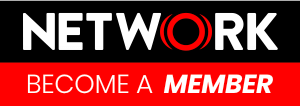In many ways, the production aspect of making a film is the easy part. It may be expensive, time-consuming and tiring, but if you are working with people who are dedicated to their craft, they are going to make the best film possible. The tough part is getting other people to watch what you’ve made. However, with social media, Internet distribution and small film festivals, releasing your film to an audience isn’t as hard as it once was.
Social Media
Before you begin filming, start building the social media arm of the production. This is as easy as making Facebook pages, creating Instagram and Twitter accounts and using any other big social media platforms that fit your goals. Once they're created, start sharing them with friends, family, local communities of the genre, film festival organizations and anyone else who might have a passing interest in it.
One reason social media doesn't always work is because you have to give regular updates and keep your story top of mind. Good social media usage is like growing a plant — too little content and it withers and dies, too much and it looks more like a weed than a flower. Plan out your updates, so you know when you're going to share updates on your actors, concept art, designs and production.
Don’t forget to make an electronic press kit (EPK). This is a quickly and easily distributed bundle of promotional material. It should include casting choices, movie posters and behind the scenes (BTS) photography. BTS photos are a great way to show your followers what you’re making. While hiring a professional photographer is ideal, many followers just want to see what’s going on. In this case, using a smartphone that is already connected to your social media accounts is quicker and more natural. Just be sure to choose a smartphone that takes high-quality pictures in low light, such as the Samsung Galaxy S6, because a flash can ruin a shot and dark, poor-quality photos shouldn’t be shared on social media.
Festivals
Submitting your work to local film festivals is a great way to build your legitimacy. Start off in smaller festivals and work your way up, so you can test the waters without jumping into the deep end. If your movie gets panned at Sundance, it is going to hurt you more than the “shown at Sundance” label is going to help you.
Screening your film at conventions is another good way to get buzz about your film with your target audience. There are so many conventions that finding one with the perfect audience should not be too much of a hassle.
Slowly growing your brand helps the film you're promoting, and it also is a good platform to have for future projects. So, even if the current project doesn’t do as well as you hoped, learn from your mistakes and improve on them.
Distribution
Film distribution is at a strange place right now because of technology advancements. Physical copies of media are declining, but digital distribution is harder to monetize. Physical media, like DVDs or Blu-Rays, are still a good way to reward crowd-funding and other funding sources because it helps donors connect with the production in a physical way.
Platforms like YouTube and YouTube RED are great if you have a lot of short-form content due to how ads work on a per view basis. These platforms get your content in front of your audience and can be used as a launching platform for bigger projects. However, they aren’t as helpful for long-form work, such as a feature. For this type of content, you need something like Distribber that enables you to network with major platforms, including iTunes, Amazon and Netflix. The downside here is that they only accept feature-length videos, which are generally over 90 minutes long and have fees.



















